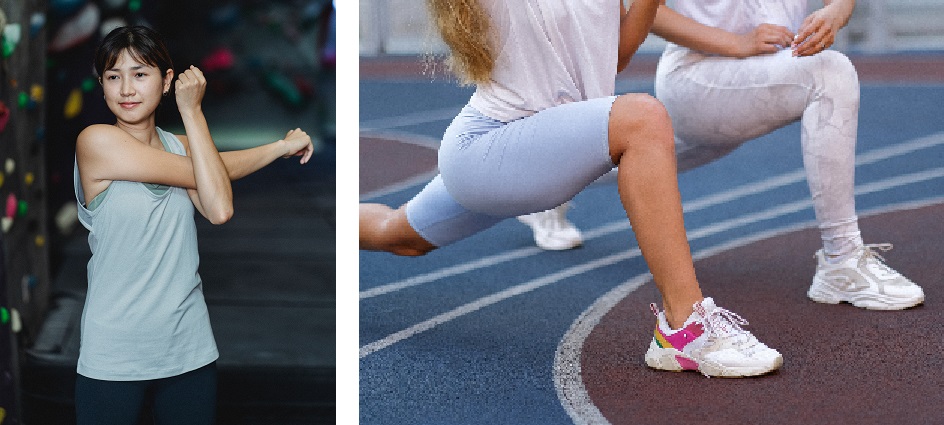Types of Stretching:-

The most common type of stretching are:-
Static Stretching
The most common type of stretching, static stretching, is executed by extending the targeted muscle group to its maximal point and holding it for 30 seconds or more. Static Stretching is a slow controlled movement that rectifies postural defects and improves body alignment. It also decreases muscular stiffness and soreness and also reduce the risk of acute muscle injuries.
There are two types of static stretches:
- Active: Added force is applied by the individual for greater intensity
- Passive: Additional force is applied by an external force (e.g., partner or assistive device) to increase intensity
Dynamic Stretching
Dynamic stretching involves active movements in which the muscles are stretched and the joints are allowed to move through their full range of motion. Dynamic stretches are performed at a slower pace than most workouts. The purpose of dynamic stretching is for warm up of muscles and improved flexibility as a preparation prior to an exercise or a sports activity.
Example: High Knee, Arm circles, Hip circles, leg swing, lunge walk with twist, Caroca, side shuffle.
Ballistic Stretching
- Ballistic stretching is a warm-up stretch method that causes sudden movements to increase flexibility. It is mainly used to increase range of motion and is beneficial when done on a regular basis.This type of stretching uses the momentum of a moving body to perform repeated bouncing movement to stretch a targeted muscle group.
- The body is pushed beyond its comfort zone in ballistic stretching. Ballistic stretching exercises are ideal for physical activities such as soccer, basketball, volleyball, martial arts, dancing and gymnastics
that require high levels of flexibility. Ballistic stretching causes reduction in stiffness in Achilles tendon. Ballistic stretching warms up the body through a series of rigorous exercises, reduces muscle soreness and increase the rate of blood flow in all parts of the body.
People often confuse ballistic stretching with dynamic stretching. While both methods involve active movement during the stretch, they are different. Dynamic stretching doesn’t push muscles past their normal range of motion and there is no bouncing motion.

